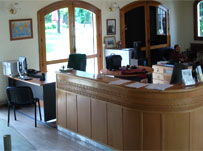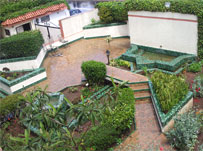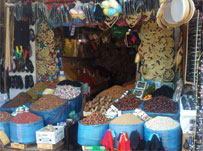FRENCH / EN FRANCAIS
Le 14 juillet est le jour de la fête républicaine française symbolisant la Liberté et l’Egalité, et commémorant le passage de la monarchie à la République.
Histoire:
A Paris, le mardi 14 juillet 1789, des émeutiers prennent d’assaut la prison de la Bastille qui est le symbole du pouvoir absolutiste. Leur objectif est de s’emparer des armes pour pouvoir affronter les troupes du Roi. Ce jour marque le début de la Révolution française, la constitution de nouvelles règles de fonctionnement et l’instauration de nouvelles valeurs, définies dans la Déclaration des droits de l’homme. Comme ce jour a été très sanglant pour le peuple français, c’est le jour de la Fédération du 14 juillet 1790 qui est officiellement célébré, et non pas la prise de la Bastille.
Jour de fête nationale: feux, bals et défilés
Partout en France et pour tous c’est jour de fête nationale. De somptueux défilés militaires sont organisés, avec défilés motorisés, aériens et à pied, sauts de parachutistes et fanfares militaires. D’innombrables feux d’artifice sont tirés les 13 et 14 juillet, et des bals populaires et des concerts animent les villes en effervescence jusqu’au bout de la nuit ! Chaque année, flonflons, pétards, cocardes tricolores, danse et musette accompagnent l’ambiance festive, bon enfant et féérique du 14 juillet. C’est une expérience unique à vivre !
Voici 3 des villes qui offrent un spectacle fabuleux à cette occasion:
Paris:
La plus importante parade militaire se déroule à Paris. Les principaux corps d’armées sont présents, et les militaires défilent en grande tenue sous les yeux du président de la république et de la foule. Brandissant fièrement le drapeau de la nation, le cortège descend le long des Champs Elysées, de la Place de l’Étoile jusqu’à la Concorde.
L’impressionnant feu d’artifice de Paris est un de ceux qui nécessitent le plus de moyens financiers et humains en France. Tiré au pied de la tour Eiffel, on peut l’admirer depuis le Champ de Mars ou la Place du Trocadéro.
Lyon:
Un bal des pompiers est généralement organisé dans toutes les villes de France. A Lyon, pour 2010, les sapeurs pompiers de Gerland transformeront leur caserne en un club géant, avec une plage de sable à l’extérieur. Sur la Place de la Croix Rousse, une véritable station balnéaire prendra place, où danse, musique, transats, boissons et pétanque seront au programme. Sur les quais de Saône, 3 scènes différentes constitueront le grand bal populaire. Le feu d’artifice grandiose de Lyon partira depuis la colline de Fourvière.
Carcassonne, à une heure de Toulouse:
Chaque année, un exceptionnel et époustouflant feu d’artifice de renommée internationale embrase les légendaires remparts de la cité médiévale. Pendant 25 minutes, plus de 700 000 personnes assistent à ce spectacle inouï de lumières et de couleurs qui enflamment le ciel. C’est un des meilleurs feux d’artifices au monde !
ENGLISH / EN ANGLAIS
On the 14th of July, French Republican day is celebrated to commemorate the transition from the monarchy to the First Republic, and to symbolize la Liberté et l’Egalité (Liberty and Equality) won by the people.
History:
In Paris, on Tuesday, the 14th of July 1789, rioters stormed the prison of Bastille, a symbol of the absolutist power. Their objective was to take possession of the weapons to be able to face the King’s troops. This day marked the beginning of the French Revolution, the constitution of new rules of functioning, and the establishment of new values defined in the Déclaration des droits de l’homme (Human rights statement). Given that this day was very bloody for the French people, we officially celebrate the 14 July 1790 Fête de la Fédération, and not the storming of the Bastille.
Bastille Day: pyrotechnics, balls and parades
Everywhere in France and for everyone, this is a national day of celebration. Sumptuous march-pasts are organized with flypasts, motorised and walking parades, parachute jumps and military bands. There are many firework displays on 13th and 14th July, and cities across France celebrate with balls and concerts throughout the night! Every year, brass bands, firecrackers, dance and accordion music go with the festive, friendly and enchanting atmosphere of the Bastille Day. It is a unique event to experience!
Here are 3 cities offering a fabulous show for this occasion:
Paris:
The greatest march-past takes place in Paris. The main army corps are present, and impeccably uniformed servicemen parade before both the President of the Republic and the crowd. Whilst proudly brandishing the national flag, the procession goes down Les Champs Elysées, from La Place de l’Etoile to La Concorde. The impressive fireworks display of Paris requires the utmost financial and human resources. Fired at the bottom of the Eiffel tower, it can be watched from Le Champ de Mars or La Place du Trocadéro.
Lyon:
A Firemen’s ball (Bal des pompiers) is generally organised in every French town. In Lyon, for 2010, the fire-fighters of Gerland will turn their fire station into a giant club, with a sandy beach outside. On La Place de la Croix Rousse, a real seaside resort will take place, where dance, music, deckchairs, drinks and petanque are planned. On the quays at Saône, 3 different stages will host the big popular ball. The spectacular fireworks of Lyon will be fired from the Fourvière Hill.
Carcassonne, only one hour from Toulouse:
Every year, an outstanding fireworks display, well-known all over the world, sets ablaze the ancient ramparts of the medieval city. For 25 minutes, more than 700,000 people attend this extraordinary show of lights and colors setting fire to the sky. This is one of the best firework displays in the world!
If you can time your visit to France to coincide with 14th July, you will be treated to one of the best celebrations in the French calendar. Experience it from the inside by taking a language course in France; Cactus offers French courses in Paris, Lyon and Toulouse, as well as many other fantastic locations across the country.
Alternatively, why not take a language course to brush up on your French before you go? Daytime, evening and weekend French courses are available in the UK, and weekend and evening courses in the US and Canada.


 It perches high on a cliff in the middle of stunning Umbrian landscape, and shows off its magnificent gothic cathedral for miles around. Other features of note are the labyrinth of caves and tunnels that lie beneath the town’s cobbled streets, the Etruscan ruins that sit within the city, and the remnants of a wall that enclosed
It perches high on a cliff in the middle of stunning Umbrian landscape, and shows off its magnificent gothic cathedral for miles around. Other features of note are the labyrinth of caves and tunnels that lie beneath the town’s cobbled streets, the Etruscan ruins that sit within the city, and the remnants of a wall that enclosed  ,
,  foreign tourists. The city has an interesting history and there are certainly sites to see, but a lot of Calgliari’s charm lies in its pace of life, its laid back atmosphere and its (largely seafood inspired) cuisine. It is also home to some of the most breathtaking beaches and waters outside of the Caribbean…
foreign tourists. The city has an interesting history and there are certainly sites to see, but a lot of Calgliari’s charm lies in its pace of life, its laid back atmosphere and its (largely seafood inspired) cuisine. It is also home to some of the most breathtaking beaches and waters outside of the Caribbean…

 This Easter I decided to do a 1-week intensive course in one of Cactus schools. My destination was
This Easter I decided to do a 1-week intensive course in one of Cactus schools. My destination was  Even though I had learnt quite a lot during these 3 terms in the UK, it was all stored in my head but never used. In Morocco in a matter of a few days I was having short conversations to taxi drivers, waiters and people at the “souks” and this made me feel really good. They could understand me and I could understand them; even if I wasn’t saying everything properly or using the right verb form, I made myself understood. Isn´t that what the aim of learning a language is after all? COMMUNICATION.
Even though I had learnt quite a lot during these 3 terms in the UK, it was all stored in my head but never used. In Morocco in a matter of a few days I was having short conversations to taxi drivers, waiters and people at the “souks” and this made me feel really good. They could understand me and I could understand them; even if I wasn’t saying everything properly or using the right verb form, I made myself understood. Isn´t that what the aim of learning a language is after all? COMMUNICATION.
 There are beautiful places to visit such as the Kasbah of the Oudaya, the Hassan Mosque and its Tower, the Mohammed V Mausoleum, the Royal Palace the remarkable Andalusian Gardens in the new city quarters. The ruins of Chellah are not to be missed either.
There are beautiful places to visit such as the Kasbah of the Oudaya, the Hassan Mosque and its Tower, the Mohammed V Mausoleum, the Royal Palace the remarkable Andalusian Gardens in the new city quarters. The ruins of Chellah are not to be missed either.